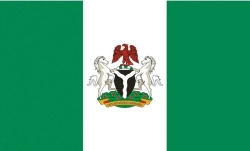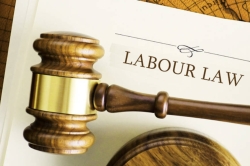
Rivers State, located in the oil-rich South-South geopolitical zone of Nigeria, is one of the nation’s most economically significant states. Renowned for its abundant petroleum resources, vast waterways, and vibrant cultures, Rivers State is both a commercial and cultural hub. It is the center of Nigeria’s oil and gas industry, hosting several multinational companies and key infrastructure.
The state is strategically divided into 23 Local Government Areas (LGAs) which serve as administrative, political, and developmental units. Each LGA in Rivers State plays a critical role in grassroots governance, economic planning, resource management, and public service delivery.
This article offers a detailed breakdown of the Local Government Areas in Rivers State, including their headquarters, key features, economic activities, and developmental significance.
Overview of Rivers State
-
Capital: Port Harcourt
-
Date Created: May 27, 1967
-
Slogan: Treasure Base of the Nation
-
Region: South-South Nigeria
-
Main Languages: Ikwerre, Kalabari, Ogoni, Ijaw, Hausa, Igbo, English
-
Number of LGAs: 23
-
Major Economic Activities: Oil and gas, fishing, agriculture, trade, and marine transport
Full List of Local Government Areas (LGAs) in Rivers State
Here is the full list of the 23 LGAs in Rivers State along with their headquarters:
| S/N | LGA Name | Headquarters |
|---|---|---|
| 1 | Abua/Odual | Abua |
| 2 | Ahoada East | Ahoada |
| 3 | Ahoada West | Akinima |
| 4 | Akuku-Toru | Abonnema |
| 5 | Andoni | Ngo |
| 6 | Asari-Toru | Buguma |
| 7 | Bonny | Bonny |
| 8 | Degema | Degema |
| 9 | Eleme | Nchia |
| 10 | Emohua | Emohua |
| 11 | Etche | Okehi |
| 12 | Gokana | Kpor |
| 13 | Ikwerre | Isiokpo |
| 14 | Khana | Bori |
| 15 | Obio/Akpor | Rumuodomaya |
| 16 | Ogba–Egbema–Ndoni | Omoku |
| 17 | Ogu/Bolo | Ogu |
| 18 | Okrika | Okrika |
| 19 | Omuma | Eberi |
| 20 | Opobo/Nkoro | Opobo Town |
| 21 | Oyigbo | Afam |
| 22 | Port Harcourt | Port Harcourt City |
| 23 | Tai | Saakpenwa |
Key Features and Economic Activities Across LGAs in Rivers State
1. Abua/Odual
-
Predominantly agrarian with cultivation of cassava, yam, and plantain.
-
Hosts oil and gas facilities contributing to local revenue.
-
Rich in rivers and creeks, boosting local fishing.
2. Ahoada East
-
Home to oil wells and pipelines.
-
Engages in subsistence and commercial farming.
-
Key center for traditional cultural displays.
3. Ahoada West
-
Known for oil exploration and small-scale farming.
-
Fertile land supports palm oil and vegetable production.
-
Hosts several rivers aiding transportation.
4. Akuku-Toru
-
Renowned for fishing, marine transport, and oil activities.
-
Abonnema town is a notable heritage site.
-
Also known for canoe making and traditional boat regattas.
5. Andoni
-
Coastal LGA with rich fishery resources.
-
Marine-based economy with growing tourism potential.
-
Hosts mangrove ecosystems and cultural festivals.
6. Asari-Toru
-
Economically driven by fishing and oil.
-
Buguma town is a historic Kalabari cultural center.
-
Known for boat building and artisanal crafts.
7. Bonny
-
Hosts Nigeria Liquefied Natural Gas (NLNG) plant.
-
Bonny Island is a major oil and gas export terminal.
-
Strategically important to Nigeria’s economy.
8. Degema
-
Similar to other coastal LGAs with fishing and oil as core sectors.
-
Plays host to cultural heritage sites.
-
Communities benefit from youth empowerment projects.
9. Eleme
-
Industrial hub with petrochemical and fertilizer plants.
-
Major refinery and industrial complex located in Eleme.
-
Also has thriving commercial agriculture and trading.
10. Emohua
-
Inland LGA known for palm oil, cassava, and yam production.
-
Features oil wells and pipelines.
-
Access roads aid trade and inter-LGA commerce.
11. Etche
-
Dominated by agriculture with crops like cassava and maize.
-
Rising real estate and manufacturing presence.
-
Peaceful and fertile with strong cultural traditions.
12. Gokana
-
Prominent in Ogoni land, key for oil-related activism.
-
Engages in fishery and subsistence agriculture.
-
Advocates for environmental restoration post-oil exploration.
13. Ikwerre
-
Hosts the Port Harcourt International Airport.
-
Rich in culture and vibrant agriculture.
-
Part of the rapidly urbanizing zones of Rivers State.
14. Khana
-
Known for Bori town and Ogoni heritage.
-
Oil and gas installations and historic protests for land rights.
-
Engages in farming and small-scale businesses.
15. Obio/Akpor
-
A highly urbanized LGA within the Greater Port Harcourt area.
-
Commercial, residential, and administrative hub.
-
Hosts banks, hotels, schools, and shopping centers.
16. Ogba–Egbema–Ndoni
-
High concentration of oil and gas industries.
-
Omoku is a key administrative and commercial center.
-
Diverse ethnic makeup with vibrant markets.
17. Ogu/Bolo
-
Coastal LGA with rich marine resources.
-
Traditional boat regattas and fishing are key.
-
Cultural dances and marine festivals are popular.
18. Okrika
-
Oil and gas infrastructure dominates the economy.
-
Known for the famous "Owu-Aru-Sun" cultural festival.
-
Marine culture and craft dominate local life.
19. Omuma
-
Strong in agriculture — yams, cassava, and vegetables.
-
A peaceful, land-based LGA with growing investments.
-
Rising in relevance for rural development programs.
20. Opobo/Nkoro
-
Island-based LGA with strong water transport activities.
-
Known for its historic monarchy and beautiful islands.
-
Fishing and trading are dominant.
21. Oyigbo
-
Shares borders with Abia State, boosting trade.
-
Rapidly urbanizing and industrializing.
-
Oil and gas operations plus manufacturing investments.
22. Port Harcourt
-
Capital and most urbanized LGA in Rivers State.
-
Economic nerve center of Nigeria’s oil industry.
-
Hosts major corporations, seaports, and markets.
23. Tai
-
Rural LGA in Ogoni land known for environmental struggles.
-
Oil deposits and rich agricultural practices coexist.
-
Known for educational advocacy and development NGOs.
Importance of LGAs in Rivers State Development
The 23 LGAs in Rivers State are fundamental in:
✅ Local administration and security
✅ Community-based oil revenue management
✅ Promoting cultural identity and heritage
✅ Facilitating agriculture and fishery projects
✅ Enabling inclusive grassroots development
✅ Managing environmental impact and conflict resolution
Frequently Asked Questions (FAQs)
Q1: How many LGAs are there in Rivers State?
A: Rivers State has 23 Local Government Areas.
Q2: Which LGA is the most industrialized?
A: Obio/Akpor and Port Harcourt LGAs are the most industrialized.
Q3: Where is Bonny LGA located?
A: Bonny LGA is located on Bonny Island, known for NLNG operations.
Q4: Which LGA hosts the Port Harcourt International Airport?
A: Ikwerre LGA.
Q5: What is the primary economic activity in coastal LGAs?
A: Fishing, oil and gas operations, and boat transport.
Q6: Which LGAs form the Greater Port Harcourt Area?
A: Port Harcourt, Obio/Akpor, Ikwerre, Oyigbo, Eleme, and parts of Etche.
Q7: Are all LGAs in Rivers State oil-producing?
A: Most LGAs in Rivers State are oil-producing or host oil infrastructure.
Conclusion
Rivers State, with its 23 LGAs, is a microcosm of economic dynamism, cultural diversity, and administrative complexity. From the bustling capital of Port Harcourt to the serene fishing communities in Andoni and Opobo/Nkoro, every LGA contributes uniquely to the state’s position as Nigeria’s Treasure Base.
Understanding the structure and specialization of each LGA is essential for policy makers, investors, NGOs, researchers, and citizens looking to engage meaningfully with the state’s resources and people.


